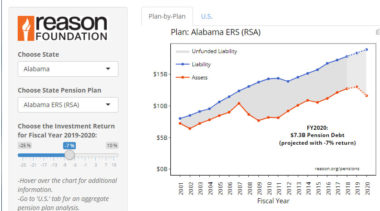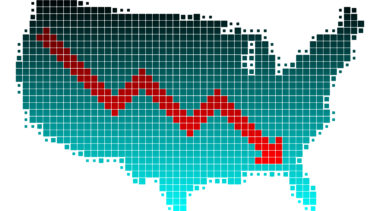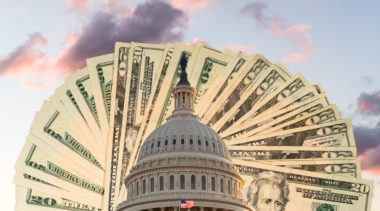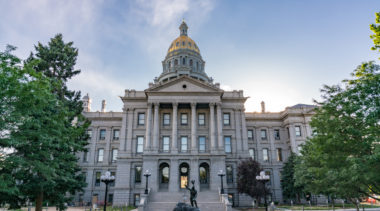Latest
-
Work-From-Home Trends Should Have Bay Area Rethinking Rail Projects
Lower tax revenue, stagnating population growth and tech companies' increased willingness to let people work from home, might mean costly rail extensions in San Jose and San Francisco shouldn't move forward.
-
How Boston’s Transit System Would Benefit From Reducing Privatization Restrictions
Contracting out transit services not only saves taxpayers and riders money, but has also been shown to improve service quality and safety.
-
Education Newsletter: School Systems Adapt During Coronavirus Pandemic, Education Stimulus Money and More
Plus: When and how the U.S. should reopen schools, ensuring K-12 budget cuts don't hurt highest-need students, previewing the COVID-19 impact on state pension plans and more.
-
State Pension Challenges – Unfunded Liabilities Before and After COVID-19-Related Economic Downturn
This new interactive tool shows how one year of bad returns can affect the funding status of public pension plans and previews the challenges ahead for state-run pensions.
-
Examining How States and School Districts Allocate Funding for Poverty Concentration
Funding based on poverty concentration within a school district, rather than an individual student's economic disadvantages, has significant trade-offs that must be considered by policymakers.
-
The Attacks on Homeschooling Continue
Both sound logic and evidence are on the side of freedom in education.
-
For Two Decades, North Dakota Has Failed to Properly Fund Its Public Pensions
NDPERS' funded ratio was only 72 percent, with $1.2 billion in pension debt, in July 2019.
-
Instead of Boasting, Florida Should Be Bracing for Bad Pension News and More Debt
If FRS’ investment returns come in at -5 percent for this fiscal year, FRS' unfunded liabilities could grow to $47 billion.
-
A Bailout Won’t Fix the U.S. Postal Service
The USPS lost about $78 billion from 2007 through 2019 due to declining mail volumes and increased costs.
-
Why Some State Pension Plans Are Better Prepared for Market Volatility Than Others
Varying approaches to risk, plan assumptions and commitment to funding help explain the disparate impact of the coronavirus crisis and market volatility on public pension plans.
-
Three Ways to Ensure Education Funding Reaches the Students Who Need It Most
Three principles to guide education and stimulus spending during the coronavirus pandemic.
-
Reviewing the Impact of Budget Cuts on Student Outcomes
Researchers claim to have found evidence that spending cuts harm students. But perhaps what they actually found was that state regulations harm students.
-
Amicus Brief: American Society of Journalists v. Xavier Becerra
This court should reverse the district court, join its sister circuits in affirming that Reed is the law of the land, and grant journalists their day in court.
-
S&P Presents Guidelines for Funding Pension and OPEB Plans
Unfunded pension liabilities are taking on a larger role in S&P's credit ratings determinations. This is bad news for cities and states with perpetual pension problems.
-
Answering Frequently Asked Questions About COVID-19 and Public Pensions
This resource, designed for state legislators and staff, will assist in answering crucial questions regarding how the pandemic and resulting market conditions have affected state sponsored public pension plans.
-
In Coping With the Coronavirus Pandemic, Mass Transit Agencies May Need to Reinvent Themselves
Transit ridership had been declining for several years before coronavirus, and now the pandemic promises to challenge these systems for months to come, if not permanently.
-
Colorado Considers Reducing Pension Contributions in Response to Budget Concerns
If pension contribution policies are adjusted it would result in the addition of significant long-term costs and a public pension plan that is no longer en route to full funding.
-
As Tourism Declines Due to Coronavirus Pandemic, Hawaii Faces Severe Pension Funding Problems
The Employees’ Retirement System of Hawaii had a funded ratio of just 55 percent before the coronavirus pandemic and economic downturn.

















